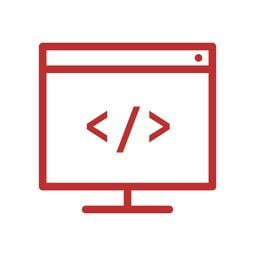The Rise of Web3: How Blockchain Technology is Revolutionizing Web Development in 2025
The Rise of Web3: How Blockchain Technology is Revolutionizing Web Development in 2025
Web3 has emerged as a transformative force in the digital landscape, fundamentally reshaping how developers approach building online platforms. In 2025, blockchain technology stands at the core of this revolution, offering decentralized, secure, and transparent solutions for web development. This article explores how Web3 is redefining traditional paradigms and why developers and businesses should pay attention to its potential.
What is Web3?
Web3, often referred to as the "decentralized web," represents the next generation of the internet. Unlike Web2, which is dominated by centralized platforms, Web3 operates on blockchain technology, enabling peer-to-peer interactions without intermediaries. It emphasizes decentralization, user ownership, and enhanced privacy.
Key components of Web3 include:
- Blockchain: The foundational technology powering decentralized applications (dApps).
- Smart Contracts: Self-executing contracts with predefined rules encoded on the blockchain.
- Cryptocurrencies: Digital assets that facilitate transactions and incentivize participation.
- Decentralized Storage: Solutions like IPFS (InterPlanetary File System) for storing data securely without centralized servers.
How Blockchain Enhances Web Development
Blockchain’s integration into web development offers several benefits:
-
Decentralization: Traditional web applications rely on central servers, making them vulnerable to outages and censorship. Web3 applications distribute data across a network, ensuring greater reliability and freedom.
-
Enhanced Security: Blockchain’s cryptographic nature provides robust protection against hacking and unauthorized access. Transactions are immutable, creating a trustworthy environment for users.
-
User Ownership: Web3 enables users to own their data and digital assets. With tools like self-sovereign identity, individuals control access to their personal information, reducing reliance on third parties.
-
Transparency: Blockchain’s public ledger ensures that all transactions are traceable and verifiable, fostering trust among users and organizations.
-
Monetization Opportunities: Smart contracts facilitate innovative monetization models, such as micropayments, subscription services, and token-based economies, benefiting both developers and users.
Real-World Applications of Web3 in Web Development
-
Decentralized Finance (DeFi): DeFi platforms allow users to engage in financial activities—such as lending, borrowing, and trading—without traditional banks. Developers leverage Web3 tools to create dApps like Uniswap and Aave, revolutionizing finance accessibility.
-
Non-Fungible Tokens (NFTs): NFTs have transformed the digital art, gaming, and entertainment industries. Web developers build marketplaces and interactive experiences for NFTs using blockchain frameworks.
-
Decentralized Social Media: Platforms like Lens Protocol and Minds prioritize user control and freedom of expression by eliminating centralized moderators.
-
Supply Chain Management: Web3 applications improve transparency and traceability in supply chains, helping businesses ensure ethical sourcing and efficient logistics.
-
Gaming and Metaverse: Blockchain-powered games and virtual worlds, such as Decentraland and Axie Infinity, enable players to own in-game assets and participate in tokenized economies.
Challenges in Web3 Development
While Web3 offers immense potential, it comes with challenges:
- Scalability: Current blockchain networks struggle to handle large-scale applications.
- Complexity: Learning and implementing blockchain technology can be daunting for developers accustomed to Web2 tools.
- User Experience: Web3 applications often require wallets and cryptocurrency, which can deter non-technical users.
- Regulation: Governments worldwide are grappling with how to regulate decentralized systems, creating legal uncertainty.
The Future of Web Development with Web3
As blockchain technology matures, solutions like Layer 2 scaling, zero-knowledge proofs, and improved interoperability are addressing many of its current limitations. The adoption of Web3 principles is expected to grow across industries, from healthcare to real estate, making the web more inclusive and equitable.
Web developers should stay ahead by exploring frameworks like Ethereum, Solana, and Polkadot, along with tools such as Web3.js and Ethers.js. Collaborating with blockchain experts and participating in decentralized communities will be crucial for building impactful applications.
Conclusion
Web3 and blockchain technology are revolutionizing web development, providing a decentralized, secure, and user-centric alternative to traditional systems. While challenges remain, the opportunities are too significant to ignore. As the internet evolves, embracing Web3 will empower developers to create innovative applications that redefine how we interact online.
The era of Web3 is here. Are you ready to build the future?
Slideserve - How a Skilled Website Design and Development Company Can Help You Navigate the Complexities of E-Commerce
Easyupload - How a Skilled Website Design and Development Company Can Help You Navigate the Complexities of E-Commerce
Mediafire - How a Skilled Website Design and Development Company Can Help You Navigate the Complexities of E-Commerce
Depositfiles - How a Skilled Website Design and Development Company Can Help You Navigate the Complexities of E-Commerce
Filefactory - How a Skilled Website Design and Development Company Can Help You Navigate the Complexities of E-Commerce
Docs Google - How a Skilled Website Design and Development Company Can Help You Navigate the Complexities of E-Commerce




Comments
Post a Comment